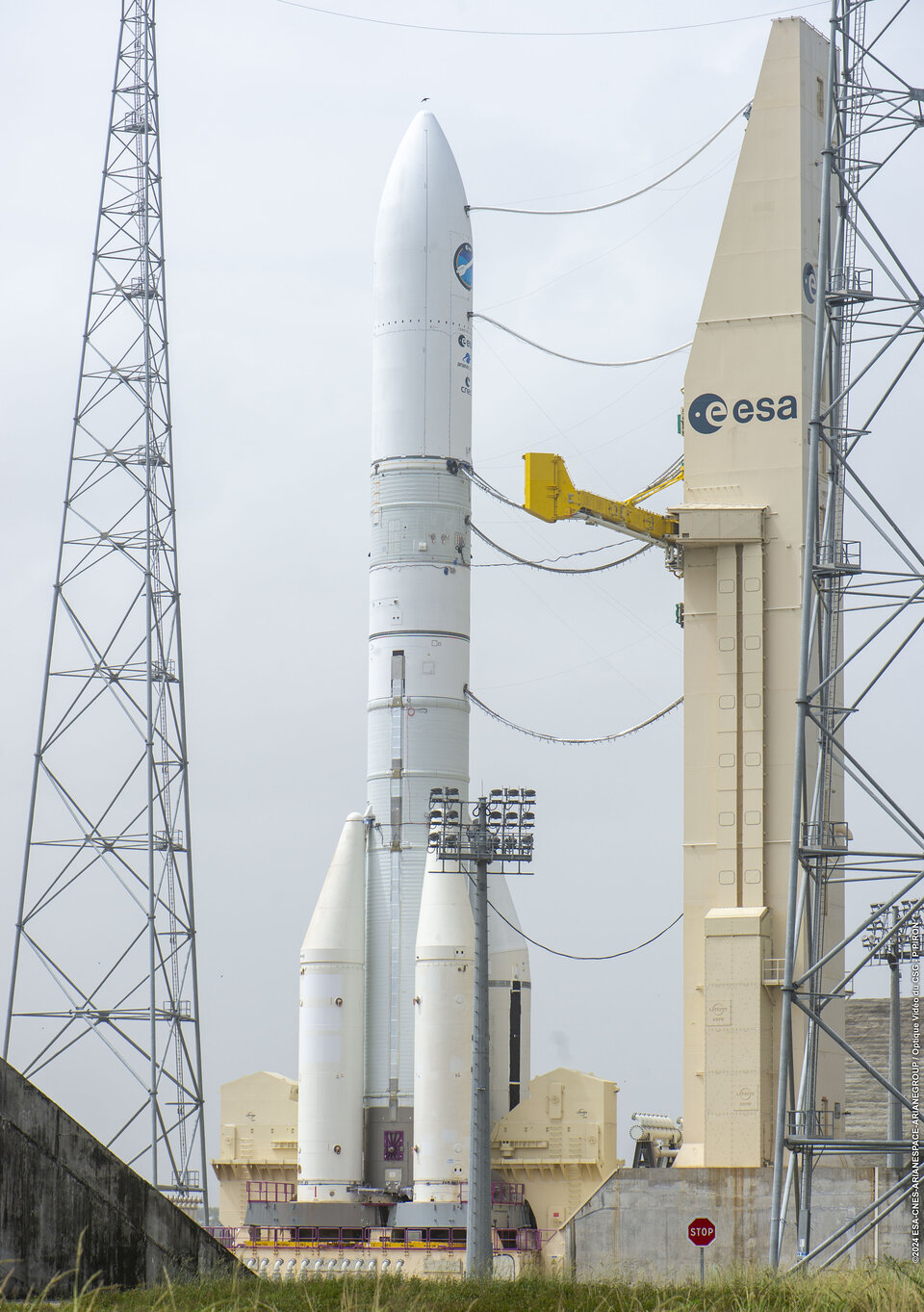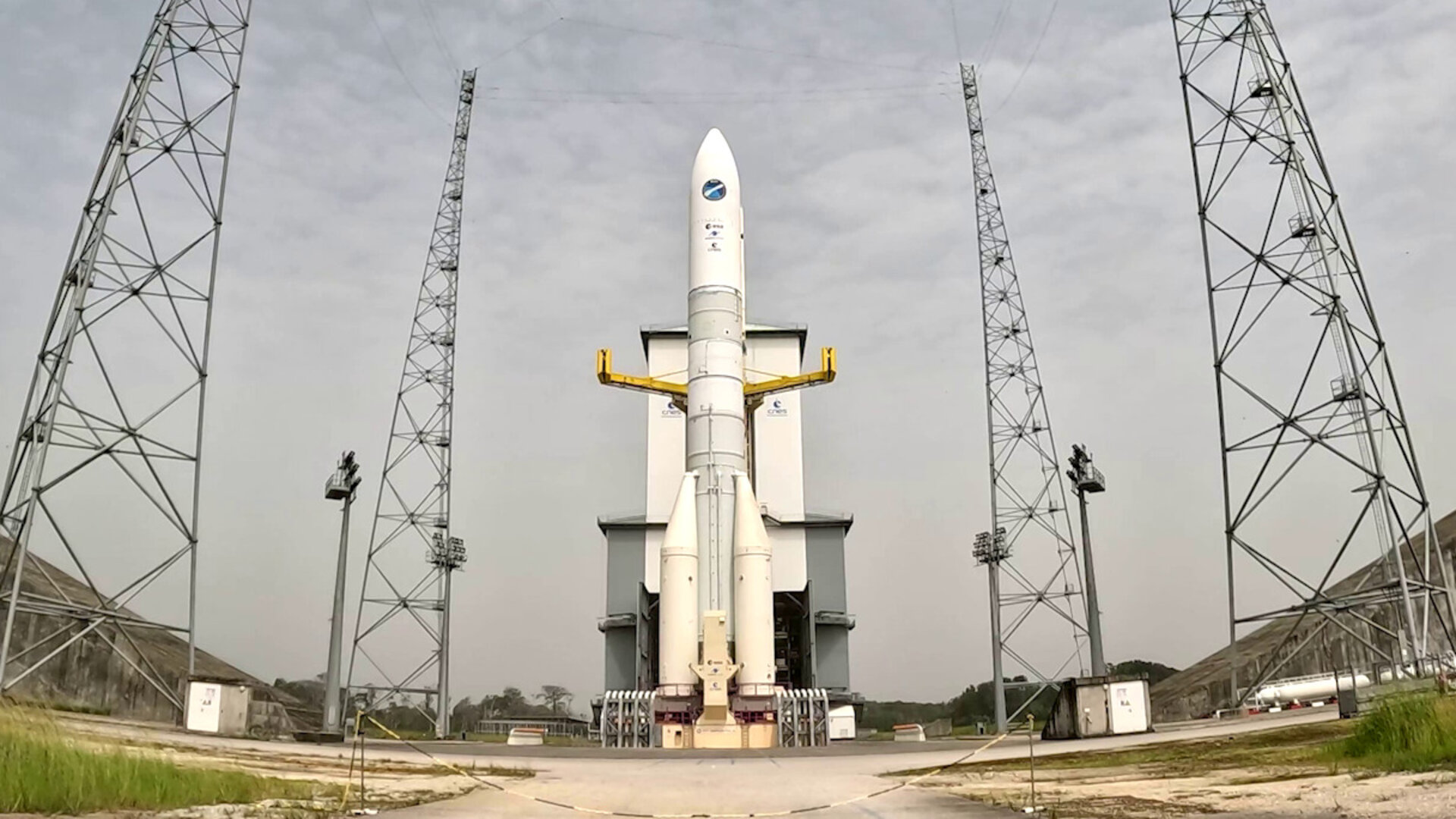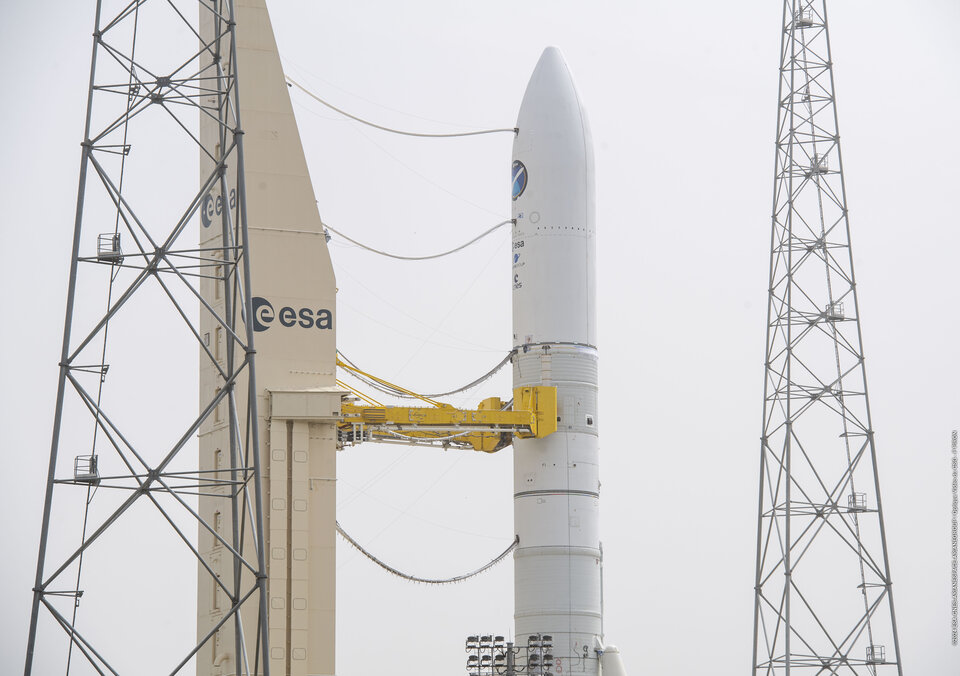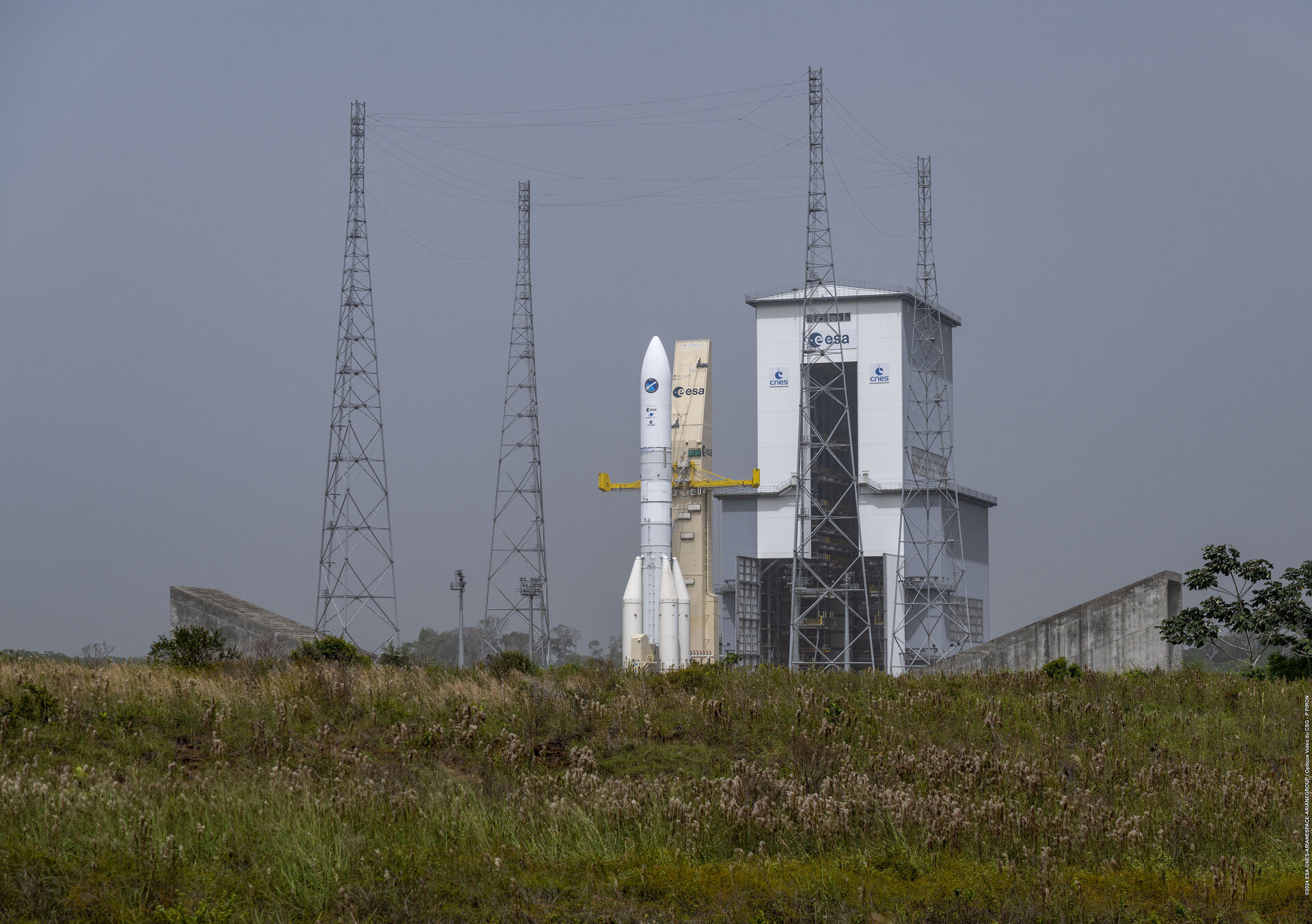Goodbye, Ariane 6 test model
In brief
Europe’s next rocket, Ariane 6, has passed all its qualification tests in preparation for its first flight, and now the full-scale test model needs to be removed from the launch pad to make way for the real rocket that will ascend to space.
In-depth

The test model that is now on the launch pad at Europe’s Spaceport in Kourou, French Guiana, stands 62 m high. It is exactly the same as the ‘production model’ Ariane 6 rockets that will soon be launched, except that its boosters do not need to be tested as part of the complete rocket, so the boosters are not fuelled.
To make way for launch, teams from ArianeGroup, France’s space agency CNES and ESA have started to remove the Ariane 6 test model by disconnecting the cables and fuel lines that pass through the launch tower.
On 30 January, the cryogenic connection system passed a last system test of the liftoff disconnection operations lines. The yellow arms seen here support the fuel lines that deliver liquid hydrogen and liquid oxygen to the upper stage to power the Vinci orbital engine – for this test there was no propellant in the fuel lines. Simultaneously at the bottom of the central core the connection system for the main stage also disconnected.
The connection system allows the free-standing launcher a clear ascent corridor on its way to space and protects the connection systems before the rocket engines’ plumes could damage it. The disconnection during the critical and complex dynamic liftoff phase must be executed in a strict timeline that has to happen with an accuracy of just a few milliseconds.


Access the video
Danger, high voltage

On 5 February, it was the turn of the electrical umbilical lines to be disconnected. These lines supply the launcher and the satellites inside Ariane 6 with electrical power but also host the digital signals for communications with the informatics system as well as carrying sensor information to ensure the flight system is in good shape for liftoff.
Teams were most interested in seeing how the heavy lines fall away from the rocket and in particular its boosters. For this test, explosive bolts were not used but a technician manually removed the blocking pin from 50 m above the launch pad.
Keep cool

The test model is free from the launch tower, so further dismantling has begun. The upper composite has been removed, this includes the nosecone that splits vertically in two and the dummy payloads underneath. They have been returned to the Encapsulation Hall that is part of the Batiment Assemblage Finale. The test model will be further disassembled by removing the boosters and returning the central core to the Batiment d’Assemblage Lanceur. The test model was first seen in full in June 2023 with many tests and rehearsals having been completed since then, including successful hot-fire tests of its main stage, structure tests and fuelling rehearsals in different scenarios, including degraded scenarios for testing the most severe conditions that could occur in operations.
"The Ariane 6 launch system test campaign took just seven months and was within schedule," says Pier Domenico Resta, ESA’s Ariane 6 launch system and engineering manager, "This is one of the best results ever achieved for a full-scale launch test campaign and it shows testament to the teams on ground doing great work to get Ariane 6 into perfect shape and ready for launch."
The larger elements for the first flight model for Ariane 6 are set to arrive soon and will start to be assembled for the inaugural launch whose schedule stays unchanged.


